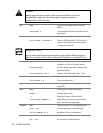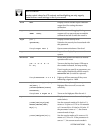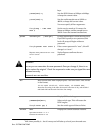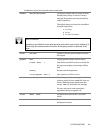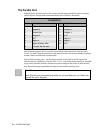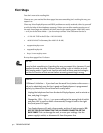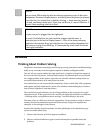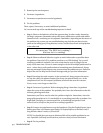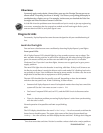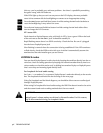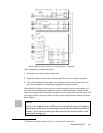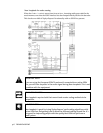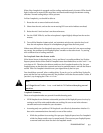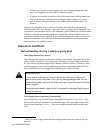
TROUBLESHOOTING 9-3
i
ISDN TIP!
You can check ISDN continuity with an ordinary telephone or pair of 600 ohm
headphones. Disconnect ZephyrExpress, and briefly place the phone (or phones)
across the line. You should hear a rhythmic clicking — about once per second —
or a loud, continuous white noise. If you hear a dial tone, it’s not an ISDN line. If
you don’t hear anything, the line is dead.
i
ISDN TIP!
Are you sure you’re plugged into the right port?
For most US installations, the line should be plugged into the lower, 4-
conductor jack on the back of ZephyrExpress — even if the phone company
supplied an 8-conductor RJ-45 jack with the line. Use a standard telephone line
cord: when you plug it into the RJ-45, it’ll automatically center itself and locate
to the right conductors.
GENERAL
Thinking About Problem Solving
Despite best intentions, something could always go wrong. Sometimes troubleshootinga
balky set-up can make even the toughest engineer a Maalox and Rogaine addict.
You can’t fix any system without the right world view; a zeitgeist of suspicion tempered
by trust in the laws of physics, curiosity dulled only by the determination to stay focused
on a single problem, and a zealot’s regard for the scientific method. Perhaps these are
successful characteristics of all who pursue the truth.
In a world where we are surrounded by complexity, where we deal daily with equipment
and systems only half-understood, it seems wise to follow understanding by an iterative
loop of focus, hypothesis, and experiment.
The notions here apply whether you are solving problems at the system level or at the
component level. At the system level, the actions you might take would be very different
– checking cables, trying different menu settings – but the thinking is the same.
Too many times, we fall in love with our suppositions. We are quick to overtly or subcon-
sciously assume the problem being chased is due to lousy design, the stupid phone
company, or the manager’s latest memo.
Armed with a healthy skeptical attitude, the basic philosophy of troubleshooting any
system is to follow these steps:
1. Observe the behavior to find the apparent problem;
2. Observe collateral behavior to gain as much information as possible about the
problem;



